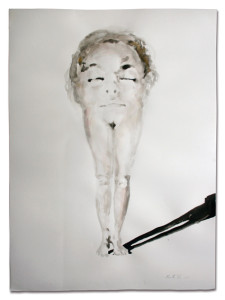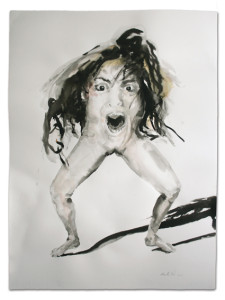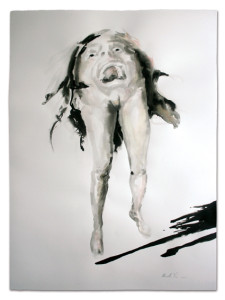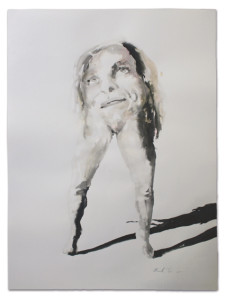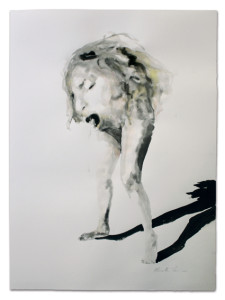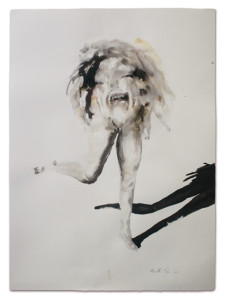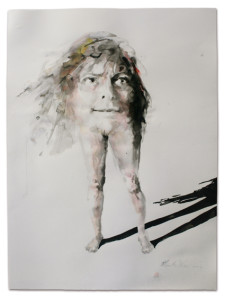Life of Baubo (Apotrope series)
Vári’s particular focus in this, and subsequent series “Apotrope studies” and “Baubo on the Shore” is on the goddess Baubo, of whom figurines have been found dating from the 5th Century BC. Baubo became one of the first “sacred fools” and her image of a jesting, sexually liberated, wise woman has informed the identities and practices of many subsequent cults of worship. Baubo has been celebrated as a positive force of female sexuality and the healing power of laughter, which is why the series is also named apotrope: a ritual or object to ward off bad luck.
Vári’s figures immediately strike one as absurd, the absurdity of a violated body. Their legs lead one’s gaze upwards, to the decorous suggestion of a vulva, indistinguishable from a slight cleft in – a chin? And then up to a face. Much larger than the legs it sits atop, the face is variously screaming, laughing, in repose… but where is the middle? The meaning of the Baubo figure in antiquity is still a matter for conjecture and interpretative debate among medievalists and historians. Fertility symbol, pagan goddess, trickster spirit? A closer look changes the feeling of absurdity to one of unease at this absent middle. Physically impossible, it demands an explanation, a palliative analysis.
The ancient proximity of the Baubo to the Sheela-na-gig has been remarked upon. The Sheela, with its vast, exposed vagina is far more clearly a figure with a female sexuality unbound, unconstrained, and even threatening to engulf its viewer. The origin story of the Baubo, on the other hand, has it exposing its genitals to provoke the laughter of the inappropriate response, the unbidden nakedness that attracts immediately the unavoidable gaze – in short, an uncanny response, that same uncanniness revealed when one cannot explain what is funny in the joke, one can only laugh.
And if we adduce the uncanny, then is it not possible to map a schema of interpretation onto these uncanny figures? If the legs and exposed genitals could be seen as the seat for the id, and the head and face that of the superego, the absent middle here, then, is that of the ego, the slave to three masters. It is the ego’s job to introduce time to experience, to instil the presence of a narrative, of social organisation. In these figures narrative is delicately but unyieldingly subverted, in the profound way that art can make possible. Here, the unconscious agencies have taken over the asylum in the form of mysterious and uncanny bodies par excellence. It is not precisely what Deleuze and Guattari had in mind, but these bodies-without-organs tell us about the irruption of that freedom of existence that lies within us all, and which we sometimes call the unconscious.
Life of Baubo (Apotrope) series I – VII
2012-2013
Ink on Fabriano
750mm x 500mm
